As aforementioned in an enclosure
system the loudspeakers are arranged in phase or in an acustical
alignement allowing a linear transistion among the several frequency
ranges.
As a matter of fact such frequency ranges are portions of the
audio spectrum covering from: 30 - 100 Hz, 500 - 5000 Hz and
5000 - 20000 Hz, respectively low, mid and high frequency. In
order to achieve a controlled transition between the several
frequencies ranges an eletrical device called dividing network
or crossover network is used.
Most enclosure systems use passive dividing networks which are
connected between the amplifier output and the individual loudspeakers.
Active dividing networks are sometimes used for bi-amplification
in sound reinforcement or recording studio applications.
Originally the first loudspeakers enclosures systems were develop
for cinema or auditorium applications when were established
the industrial technical standards. The early cinema system
were one-way design consisiting of large exponetial horns which
curved back themselves. The frequency response was limited covering
no more than 100 to 5000 Hz.
Based on continuous researches the engineers soon developed
many important tecnological innovations among them are: the
woofers and high frequency drivers had three-inch voice coils.
The high frequency drivers coils were made of flat wire and
some desing used an annular slit phasing plug. In 1936, ALNICO,
a new magnetic material appeared in the market. Due to its high
coercitivy soon was employed for the manufacturing of loudspeakers
cores. Around 1940 it was launched in the market the first two
way coaxial loudspeaker.
In the early fifties with the birth of the stereophonic magnetic
recording new types of loudspeaker enclosure were developed
for the precise reproduction of the directivity effect created
by the this recording technique. One of those types of loudspeaker
enclosure was the accustic supsension developed by the american
engineer Edgard Villchur. |
|
|
| Folded low frequency
horn |
|
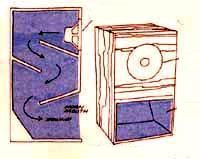 |
| Straigh, front-load horn |
|
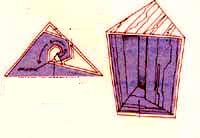 |
Folded-corner horn
The horn for the reproduction of the mid and high
frequencies comprises an electro dynamic assembling
where are located the coils and the magnet. Over
the years many types of horns were developed as
per shown in the here under mentioned pictures: |
|
|
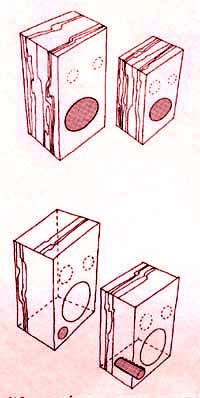 |
| Several types of the bass reflex
loudspeaker enclosure showing the tuning port. |
|
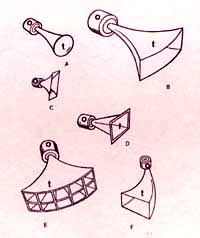 |
a- straight horn
b - 45ºx90º radial sectorial horn
c- small exponetial horn
d- 40ºx60º conical horn
e- 30ºx60º multi-cell radial horn
f- bent horn |
|
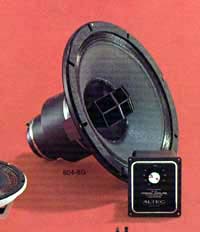 |
The first two way coaxial loudspeaker
made in the USA by Altec-Lansing circa 1940.
In the left: the infinite baffle loudspeaker enclosure
In the right: the acustic suspension loudspeaker
enclosure |
|
|
|
|
|
|